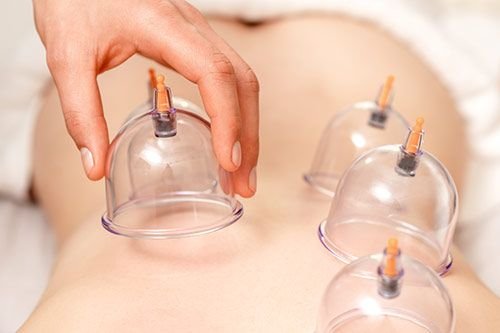Dubai, a city known for its innovation and cultural diversity, is home to various traditional healing practices alongside modern medical advancements. One such practice gaining popularity in recent years is “Hijama,” also known as cupping therapy. With its roots in ancient civilizations, Hijama has been practiced for centuries and continues to offer numerous benefits for health and wellness. In this guest post, we delve into the world of Hijama in Dubai, exploring its origins, benefits, uses, and more.
Origins of Hijama:
Hijama, derived from the Arabic word “hajm,” meaning “sucking,” refers to the process of creating suction on the skin to draw out stagnant blood, toxins, and impurities from the body. The practice dates back to ancient times, with references found in various cultures, including Chinese, Egyptian, and Islamic civilizations. In Islamic tradition, Hijama is considered a form of prophetic medicine, as it is believed to have been recommended by the Prophet Muhammad (peace be upon him) for its healing properties.
The Hijama Process:
Hijama therapy involves the placement of cups on specific points of the body, typically along meridian lines or areas of pain or discomfort. These cups may be made of glass, plastic, or bamboo and are used to create suction by either heating the air inside (dry cupping) or using a pump to remove air (wet cupping). Once the cups are applied, they are left in place for a few minutes to facilitate the extraction of toxins and promote blood flow to the area.
Benefits of Hijama:
Detoxification:
One of the primary benefits of Hijama is its ability to detoxify the body by removing stagnant blood, lymph, and toxins from the tissues. This can help improve circulation, enhance the body’s natural detoxification processes, and boost overall health and vitality.
Pain Relief:
Hijama has been used for centuries as a natural remedy for pain relief, particularly in the treatment of musculoskeletal conditions such as back pain, arthritis, and migraines. The suction created by the cups helps to release tension in the muscles, reduce inflammation, and alleviate pain and discomfort.
Promotion of Healing:
By stimulating blood flow to the affected area, Hijama can promote the body’s natural healing response, speeding up the recovery process from injuries, surgeries, and chronic conditions. It can also help reduce scar tissue formation and improve tissue regeneration.
Stress Reduction:
Many people find Hijama to be deeply relaxing and therapeutic, making it an effective tool for stress reduction and relaxation. The process of cupping can help release tension from the body, calm the nervous system, and promote a sense of well-being and tranquility.
Immune Support:
Hijama is believed to stimulate the immune system by increasing circulation and removing toxins from the body. This can help strengthen the body’s defenses against illness and infection, making it particularly beneficial during times of seasonal change or when feeling run down.
Uses of Hijama:
Hijama therapy can be used to address a wide range of health concerns and conditions, including:
Musculoskeletal Pain:
Hijama is often used to relieve pain and stiffness in the muscles, joints, and connective tissues, making it a popular choice for athletes, individuals with chronic pain conditions, and those recovering from injuries or surgeries.
Digestive Disorders:
Hijama may help improve digestion and relieve symptoms of gastrointestinal disorders such as indigestion, bloating, and constipation. It can also be beneficial for detoxifying the liver and supporting overall digestive health.
Respiratory Conditions:
Cupping therapy is believed to help open the airways, reduce inflammation, and alleviate symptoms of respiratory conditions such as asthma, bronchitis, and allergies.
Skin Conditions:
Hijama can be used to improve the appearance and health of the skin by promoting circulation, reducing inflammation, and detoxifying the tissues. It may be beneficial for conditions such as acne, eczema, psoriasis, and cellulite.
Stress and Anxiety:
Hijama therapy has a calming and grounding effect on the body and mind, making it an effective tool for managing stress, anxiety, and emotional imbalances.
Safety and Considerations:
While Hijama is generally considered safe when performed by trained professionals, there are certain precautions and considerations to keep in mind:
Qualified Practitioners:
It’s essential to seek treatment from a qualified and experienced practitioner who adheres to strict hygiene standards and follows proper safety protocols.
Individualized Treatment:
Each person’s body and health condition are unique, so it’s important to discuss any pre-existing medical conditions, medications, or concerns with your practitioner before undergoing Hijama therapy.
Post-Treatment Care:
After receiving Hijama treatment, it’s essential to follow your practitioner’s post-treatment care instructions, which may include staying hydrated, avoiding strenuous activity, and protecting the treated area from exposure to extreme temperatures.
Conclusion!
Hijama therapy offers a holistic approach to health and wellness, drawing on ancient wisdom and modern science to promote healing and balance in the body. Whether you’re seeking pain relief, detoxification, stress reduction, or immune support, Hijama has much to offer for improving your overall well-being. By understanding its origins, benefits, uses, and safety considerations, you can make an informed decision about incorporating this ancient healing practice into your wellness routine.
